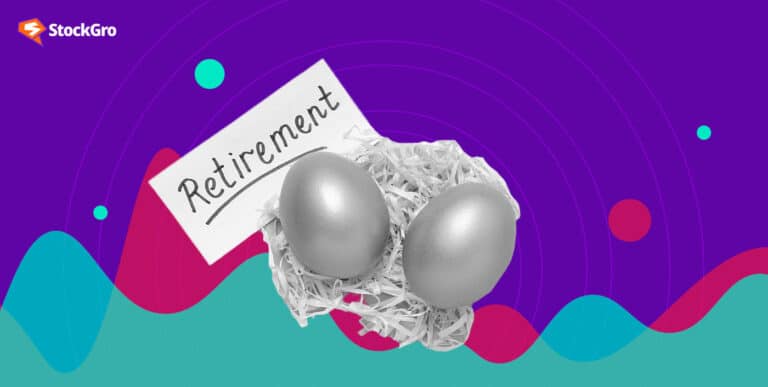
Ask anyone with successful side ventures, and they’ll tell you that the hustle is hard, but the rewards are sweet. Beyond pure profit, side hustles provide fulfilment, flexibility, and future security. However, too many entrepreneurs need help covering day-to-day expenses with their supplemental earnings rather than leveraging them to build long-term wealth.
This blog provides tips on strategically investing profits so they compound returns and ultimately make your money work for you. Whether you’re looking to grow passive income streams or hit bigger financial goals, allocating a portion of these extra earnings into smart investment vehicles is a savvy move.
Choosing your investing priorities
Before determining what specifically to invest in, identify your overall financial priorities for your side hustle income. Ask yourself:
- What long-term money milestones do I want to achieve in 5, 10 or 20+ years?
- Would I rather build towards guaranteed passive income strategies to replace active work overtime?
- Or have I maxed retirement accounts and now want to save up capital for a major future purchase like a house, car or starting another venture someday?
The answers should guide your optimal investing allocation strategy for balancing risk, returns, liquidity needs and time horizons.
For example, those prioritising long-term passive streams may overweight assets, throwing off recurring cash flows like dividend stocks. In contrast, someone impatiently saving up for a near-term down payment may prefer less volatile, liquid assets. Regardless of end goal specifics though, the universal rule applies: make sure to leave extra earnings languishing in traditional low-interest savings accounts when far smarter options exist!
You may also like: Starting a side business: tips and ideas
Side hustle investing options to consider
While your priorities dictate ideal portfolio construction, almost all side hustlers should incorporate a mix of the following investment avenues:
High-yield savings
Before investing hustle profits aimlessly, establish an emergency cash cushion. High-yield online savings accounts offer vastly superior liquid interest rates over brick-and-mortar banks – generally APYs of 2% or more. This survivability fund covers 3-6+ months of living costs if income disruption strikes.
Retirement accounts
Side hustle earnings count as taxable income, so contribute up to your legal limits across tax-advantaged retirement plans. Reap double benefits via major tax savings AND pursue decades of compounded market gains.
Low-cost index funds
For long-term hands-off stock market investing, index funds tracking major market indexes offer diversified exposure riding overall economic growth. Historically averaging ~10% annual returns, index fund gains outpace inflation, protecting purchasing power long-term.
Individual stocks
If willing to accept more risk and effort, research buying individual stocks with strong fundamentals, competitive advantages and growth runways. Potentially earn far higher returns than indexes but require picking winners and stomaching volatility.
Also Read: Entrepreneurship 101: from idea to execution
Real estate
Those with sufficient capital from side hustles can invest directly into rental properties and real estate crowdsourcing platforms to share income from deals. Benefit from passive rental income, property appreciation and indirect residential/commercial investment diversification.
Alternative assets
For sophisticates with ample side money to allocate, include alternative assets like private equity, venture capital funds, or cryptocurrencies where the potential upside is massive despite a highly speculative downside. Contribute small portions towards these satellite “moonshot” bets.
Optimising timelines and liquidity needs
Ideally, the money you make from side work should go right back into furthering your bottom line rather than inflating your lifestyle. But growth versus present spending tradeoffs still apply. It’s prudent advice not to lock up ALL extra earnings into illiquid investments lacking accessibility before major financial goals are met. Here are guidelines based on timeline horizons:
<5 Years
If wanting money in the near term for a car, house, education, medical expenses, or to start a business – prioritise accessible assets. Park the majority of funds in high-yield savings, securing your purchasing power. Allocate discretionary amounts into stocks, bonds and alternatives, realising they could pose risks to your principal but offer more potential for financial growth short-term.
5-15 Years
With longer time horizons benefitting compounding, moderately shift funds from liquid savings into index funds, property investments, and retirement vehicles penalty-free if withdrawn at appropriate ages. Moderately increased risk earns higher expected returns long-term.
15+ Years
The ultra-patient with sufficiently secure present-day finances can afford to maximise investing risk/reward for aggressively compounding distant future income streams. Load up tax-advantaged accounts first, then bet the majority on stocks and alternatives comfortably, knowing market turbulence smoothes over time.
Also read: Creating multiple streams of income
Staying disciplined through market volatility
While strategic investing of side hustle profits enables exciting wealth-building potential, markets inevitably ride rollercoasters in the short run. Stocks, commodities, currencies and most asset classes face periods of turbulence, causing portfolio declines. But for those able to stomach short-term volatility, keeping side hustle investments allocated across diverse assets facilitates smooth long-term compounding.
It’s easy during these stressful corrections for novice investors to panic and abandon well-reasoned plans aligned with long-term objectives. However, reactively selling low amplifies losses rather than diffusing risk over time as intended.
Battling human behavioural tendencies by adhering to a disciplined rebalancing approach proves crucial. If certain holdings decline substantially without fundamental thesis changes, resist temptations to panic sell. Instead, hold the course through temporary setbacks. Selectively buy more on pullbacks at better value prices if you still believe in enduring upside.
Invest today, profit tomorrow
Side hustles provide a prime avenue for diversifying income across economic environments. But the extra earnings potential means little long-term unless strategically invested to drive wealth-building. The additional cash flow opens up a wealth of promising investment opportunities to compound returns that make your money work harder for you.
Leveraging side money surpluses to secure your future ultimately proves more valuable than any material goods purchased today. So focus first on diligently putting profits to work – then reap compound interest rewards funding your greatest ambitions tomorrow! Even modest but consistent wealth-building from side projects compounds substantially over decades of disciplined investing and redeployment of proceeds

